
This a foldable that can be used for teaching the characteristics of direct and inverse variation.
- Subject:
- Algebra I & II
- Mathematics
- Material Type:
- Lecture Notes
- Lesson
- Date Added:
- 12/06/2019

This a foldable that can be used for teaching the characteristics of direct and inverse variation.
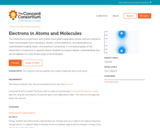
The interactions of electrons with matter have great explanatory power and are central to many technologies from transistors, diodes, smoke detectors, and dosemeters to sophisticated imaging, lasers, and quantum computing. A conceptual grasp of the interactions of electrons in general allows students to acquire deeper understanding that can be applied to a very broad range of technologies.

Use a series of interactive models and games to explore electrostatics. Learn about the effects positive and negative charges have on one another, and investigate these effects further through games. Learn about Coulomb's law and the concept that both the distance between the charges and the difference in the charges affect the strength of the force. Explore polarization at an atomic level, and learn how a material that does not hold any net charge can be attracted to a charged object. Students will be able to:
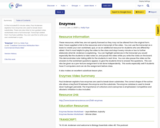
In the included11.5 minute video, Paul Andersen explains how enzymes are used to break down substrates. There are also links to two guided notes worksheets and a full transcript.
Transcript added from YouTube subtitles. You can use this to write your own worksheet or quiz.

Explore the concept of evaporative cooling through a hands-on experiment. Use a wet cloth and fan to model an air-conditioner and use temperature and relative humidity sensors to collect data. Then digitally plot the data using graphs in the activity. In an optional extension, make your own modifications to improve the cooler's efficiency.
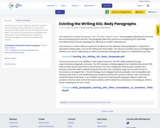
This resource is a quick reference guide for students as they develop body paragraphs in response to persuasive writing tasks, such as the Writing SOL Short Paper. The resource includes various strategies that students can use for elaborating on ideas and exemplar paragraphs based on a released SOL prompt.
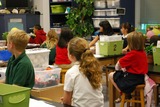
This activity is designed to be a self-paced activity to review students on the parts of Experimental Design while at home or in the classroom. There is a simple experiment for the students to complete to generate and collect data and a second example in which they design their own experiment and collect data. They are then led through the process of analyzing their data and writing a conclusion.
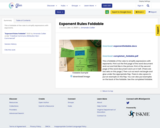
This a foldable of the rules to simplify expressions with exponents.
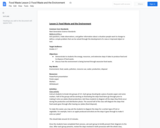
Objectives:
- Demonstrate to students the energy, resources, and extensive steps it takes to produce food and to dispose of food waste.
- Discuss how the environment is being harmed through excessive food waste.

In the engage section of the 5Elesson, students are introduced to the role of fossils as evidence of evolution and evolutionary relationships by watching a videos about the discovery of Lucy and Ardi and consider what type of information that they can gain from skull fossils. Students will then explore features of skulls from human ancestors and the modern day Homo sapien. After measuring skull to cheekbone ratios, students will create a graph to compare various species. Several interactives are provided to explain fossils, skeletal evidence for human evolution, and phylogenetic trees. Then, students will apply their skills of analyzing data about anatomical similarities and genetic information to depict evolutionary relationships between organisms using cladograms. To evaluate student understanding, students will complete an evolutionary relationships CER.
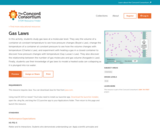
In this activity, students study gas laws at a molecular level. They vary the volume of a container at constant temperature to see how pressure changes (Boyle's Law), change the temperature of a container at constant pressure to see how the volume changes with temperature (Charles’s Law), and experiment with heating a gas in a closed container to discover how pressure changes with temperature (Gay Lussac's Law). They also discover the relationship between the number of gas molecules and gas volume (Avogadro's Law). Finally, students use their knowledge of gas laws to model a heated soda can collapsing as it is plunged into ice water.

5E model lesson covering genetic engineering tools and technologies.

Presentation of list of resources available to educators through the Virginia Geographic Alliance, National Geographic, and New American History Project

Presentation by Mary Finley-Brook is on climate justice and the research work she has done in Newport News. The economically depressed south end of Newport News is particularly vulnerable to environmental toxins from the nearby shipyard, coal terminal, and interstate highway that transects their neighborhood.
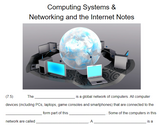
This resource is a fill-in-the-blank notes set is for Grade 7 Computing Systems & Networking and the Internet strands. The information is taken directly from the Curriculum Framework's context of the standard. Answer key included.

Students explore the sine, cosine, and tangent graphs.

This resource is a quick reference guide for students as they develop body paragraphs in response to persuasive writing tasks, such as the Writing SOL Short Paper. The resource includes various strategies that students can use for elaborating on ideas and exemplar paragraphs based on a released SOL prompt.

This resource is a quick reference guide for students as they develop body paragraphs in response to persuasive writing tasks, such as the Writing SOL Short Paper. The resource includes various strategies that students can use for elaborating on ideas and exemplar paragraphs based on a released SOL prompt.
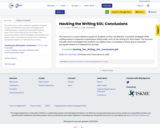
This resource is a quick reference guide for students as they use effective conclusion strategies while crafting essays in response to persuasive writing tasks, such as the Writing SOL Short Paper. The resource includes various strategies that students can deploy when concluding an essay and an exemplar paragraph based on a released SOL prompt.
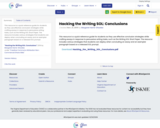
This resource is a quick reference guide for students as they use effective conclusion strategies while crafting essays in response to persuasive writing tasks, such as the Writing SOL Short Paper. The resource includes various strategies that students can deploy when concluding an essay and an exemplar paragraph based on a released SOL prompt.